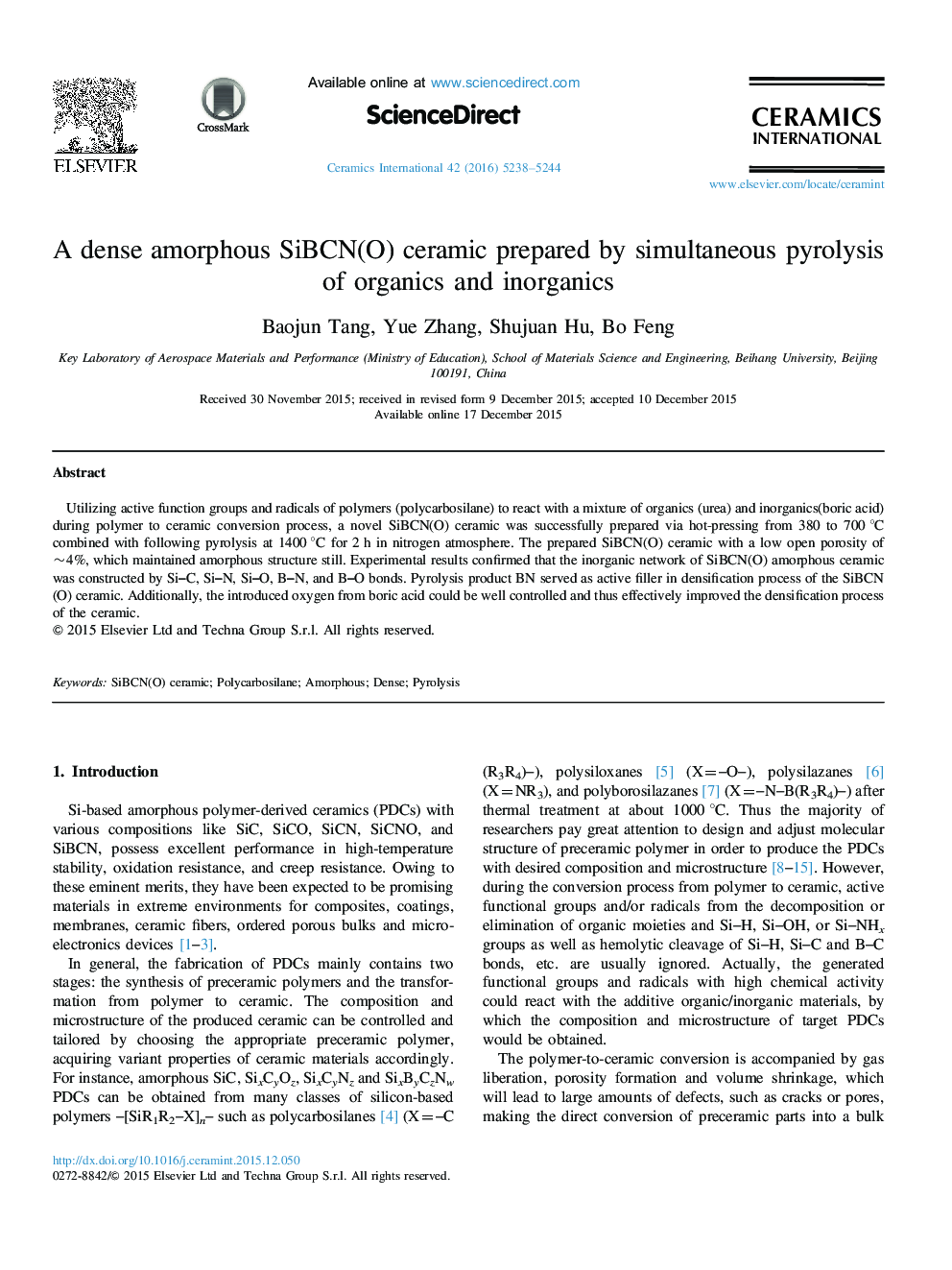| Article ID | Journal | Published Year | Pages | File Type |
|---|---|---|---|---|
| 10624403 | Ceramics International | 2016 | 7 Pages |
Abstract
Utilizing active function groups and radicals of polymers (polycarbosilane) to react with a mixture of organics (urea) and inorganics(boric acid) during polymer to ceramic conversion process, a novel SiBCN(O) ceramic was successfully prepared via hot-pressing from 380 to 700 °C combined with following pyrolysis at 1400 °C for 2 h in nitrogen atmosphere. The prepared SiBCN(O) ceramic with a low open porosity of ~4%, which maintained amorphous structure still. Experimental results confirmed that the inorganic network of SiBCN(O) amorphous ceramic was constructed by Si-C, Si-N, Si-O, B-N, and B-O bonds. Pyrolysis product BN served as active filler in densification process of the SiBCN(O) ceramic. Additionally, the introduced oxygen from boric acid could be well controlled and thus effectively improved the densification process of the ceramic.
Related Topics
Physical Sciences and Engineering
Materials Science
Ceramics and Composites
Authors
Baojun Tang, Yue Zhang, Shujuan Hu, Bo Feng,
